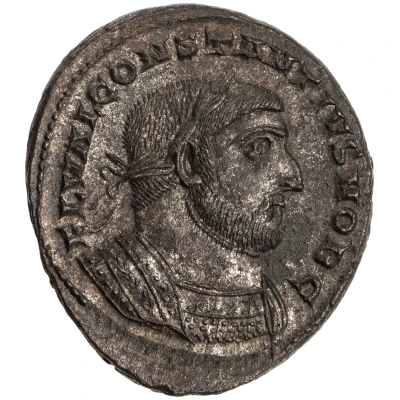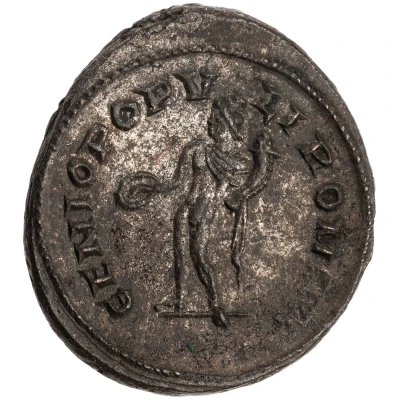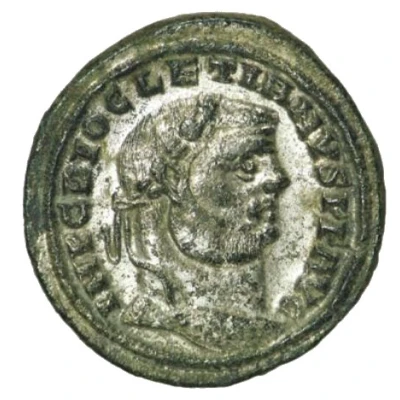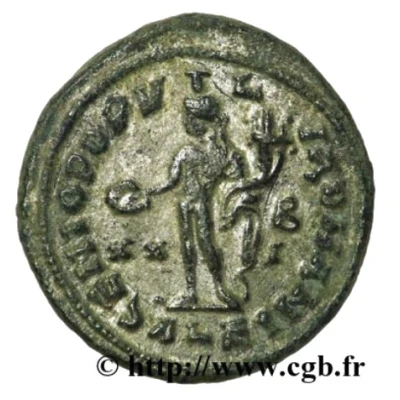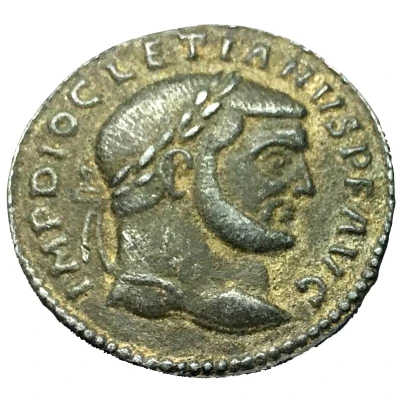
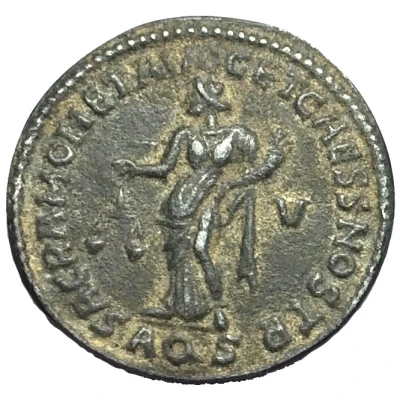

Follis - Diocletianus SACRA MONET AVGG ET CAESS NOSTR; Aquileia
301 year| Bronze | 10 g | 28 mm |
| Issuer | Rome › Roman Empire (27 BC - 395 AD) |
|---|---|
| Emperor | Diocletian (Gaius Aurelius Valerius Diocletianus) (284-305) |
| Type | Standard circulation coin |
| Year | 301 |
| Value | Nummus / Follis (¼) |
| Currency | Argenteus, Reform of Diocletian (AD 293/301 – 310/324) |
| Composition | Bronze |
| Weight | 10 g |
| Diameter | 28 mm |
| Shape | Round (irregular) |
| Technique | Hammered |
| Orientation | Medal alignment ↑↑ |
| Demonetized | Yes |
| Updated | 2024-10-05 |
| Numista | N#101535 |
|---|---|
| Rarity index | 88% |
Reverse
Moneta standing left, holding scales in right hand and cornucopiae in left hand.
V in right field.
Mintmark in exergue.
Script: Latin
Lettering:
SACRA MONET AVGG ET CAESS NOSTR
| V
AQS
Translation:
Sacra Moneta Augustorum Et Caesarum Nostrorum
(Holy Moneta of our Augusts and our Caesars)
Edge
Plain
Comment
Struck in 301 by 1st and 2nd officina only. The field-mark V does not represent the officina but the fifth issue of this type of coin.RIC lists several variants given obverse lettering and the cut or not in the obverse lettering after AVGG, while Cohen groups all variants under the same #435.
Interesting fact
One interesting fact about the Follis - Diocletianus coin is that it was part of a large-scale currency reform implemented by Emperor Diocletian in 301 AD, which aimed to address inflation and stabilize the Roman economy. The Follis coin was introduced as a new standardized currency, replacing the previous system of diverse and irregularly minted coins. This reform helped to promote trade and commerce across the empire, and the Follis coin became a widely used and trusted form of currency throughout the Roman Empire.
